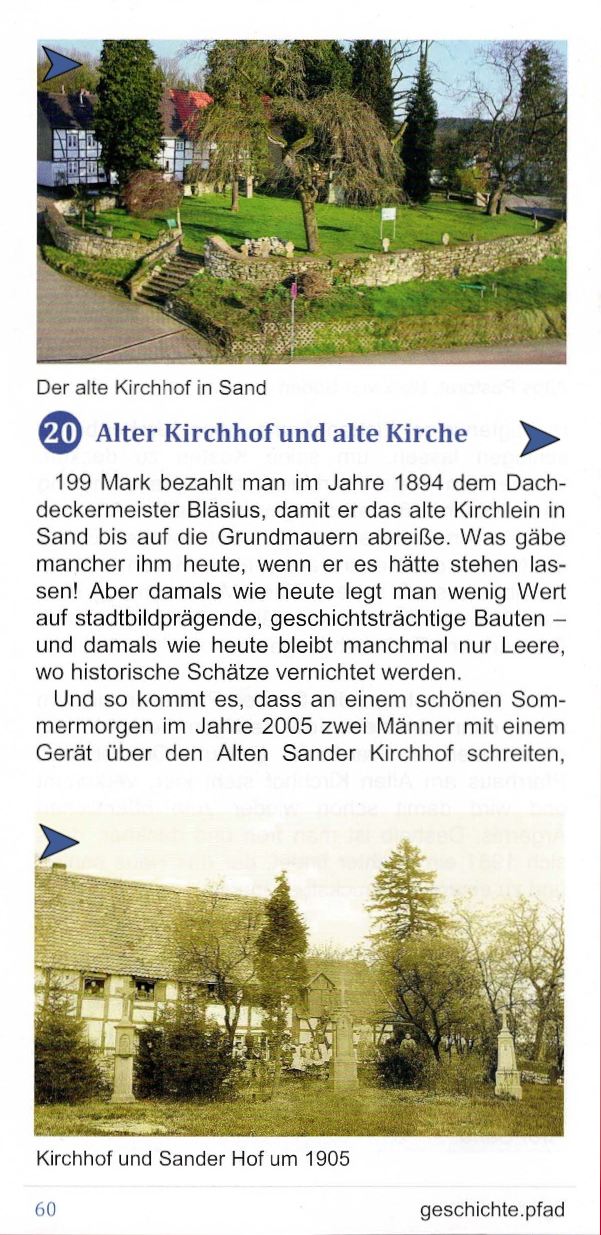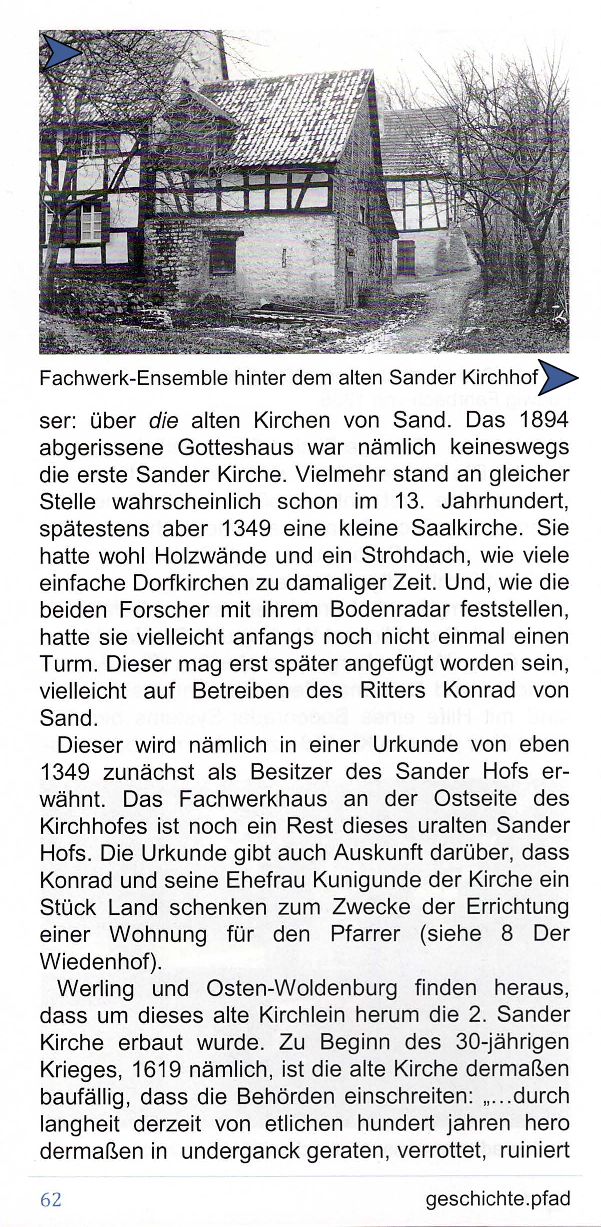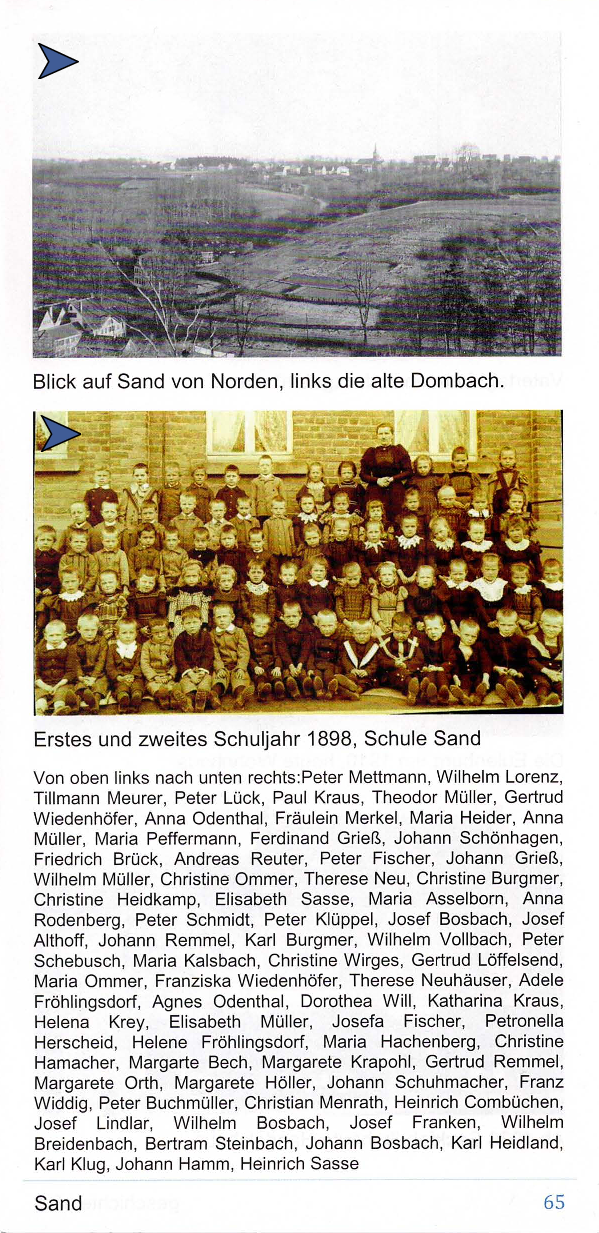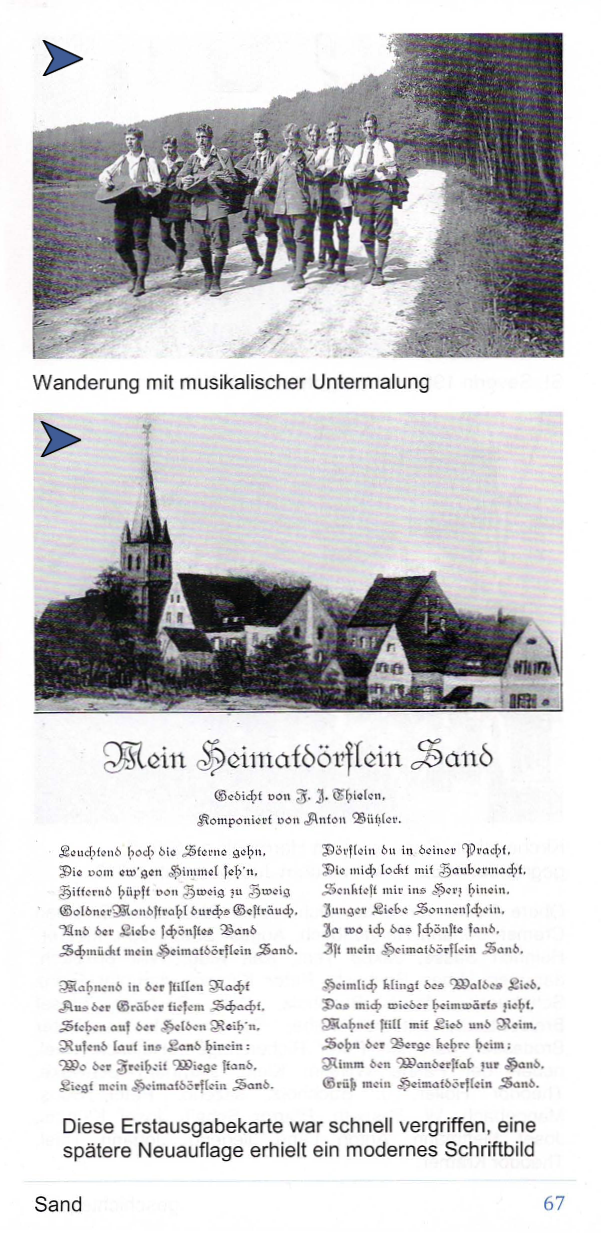geschichte.pfad
Historischer Wanderweg Sand
von Manfred Dasbach und Udo Harler
Kapitel 20
Alter Kirchhof und alte Kirche
Seiten 60 - 68
Download der kompletten Broschüre
"geschichte.pfad Historischer Wanderweg Sand"
mit englischen Texten

|
In 1894 master roofer Bläsius was paid the sum of 199 Mark to tear down the small old church at Sand to its foundations. How grateful some villagers would be today if he had left it untouched! But then as now little value is attached to landmark buildings with a particularly rich history. And then as now there sometimes remains only a vacuum where historical treasures are destroyed. So it is that one fine summer morning in 2005 two men walked across the Old Sand Church Yard with a gadget that seemed to have been borrowed from a science fiction film. |

|
|

|
|

|
|

|
|




nach oben
| vorheriges Kapitel | Übersichtskarte |
Mit freundlicher Unterstützung durch
